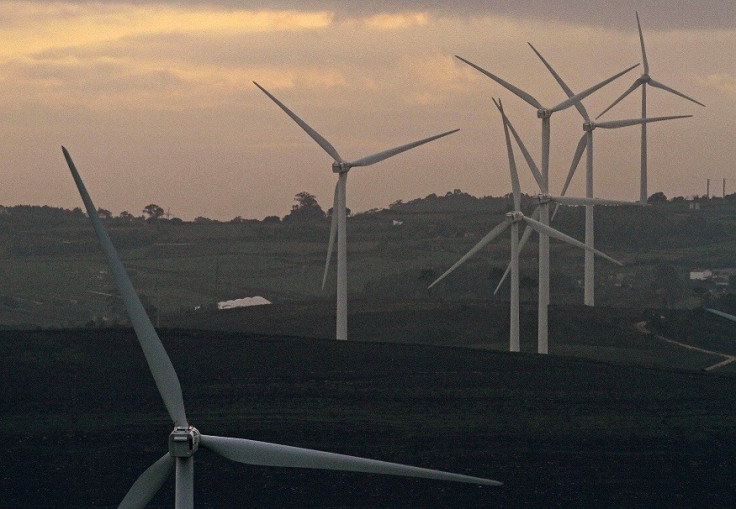Energy Revolution: Solving Big Problems Means Thinking Small [BLOG]
Windfarms, tidal power and shale gas are only part of the answer to Britain's looming energy crisis. Micro-generation at home could help

When it comes to energy, the UK finds itself in a precarious position. With warnings of a possible energy crisis by 2015, exacerbated by the impending decommissioning of several power stations, as well as binding obligations to reduce carbon emissions, the next decade presents a serious headache. That we must face these challenges in such a treacherous financial climate further complicates an already unenviable task.
An energy revolution is required. Firstly, and most obviously, we must reduce our dependence on fossil fuels. Even ignoring emission targets, they are an increasingly uneconomical way to produce energy. Dwindling reserves necessarily push prices up and leave us progressively more reliant on foreign countries for our energy needs. Factor in the possible costs of accelerated climate change and it becomes prohibitively expensive to continue on our current path.
In the short term, however, shale gas provides a potential solution. In recent years it has been effectively utilised by America to provide cheap energy, as well as reducing their carbon emissions to their lowest levels since 1991. Though UK reserves are likely to be far smaller, and though several environmental concerns remain, it certainly seems like an attractive way to meet our energy demands while reducing emissions.
Nevertheless, it can only ever be a temporary solution. As with any fossil fuel its price is guaranteed to rise as reserves shrink and it too will gradually become a less economical solution. Regardless of its economic viability, we should consider it a transient fix. While greener than our coal power stations, it must only represent a halfway step towards cleaner, more sustainable sources of energy.
Here, wind and tidal, seemingly ideally suited to the UK, provide a potentially massive source of energy. But so far wave technology has proved disappointing, and noisy, well-organised opposition has dulled the public appetite for more windfarms. In all likelihood their contribution to future energy generation will be considerable,but for now we must seek other, more viable solutions.
Nuclear power presents a better alternative. The technology is reliable and capable of meeting our demands, and indeed we are likely to see large investment in this area. However, it is an expensive option and is likely to remain so; building, maintaining and decommissioning nuclear power stations is never going to be cheap. On top of this, disasters such as the one at Fukushima are unlikely to diminish already intense local opposition to new nuclear sites.
Our approach to power generation requires a fundamental overhaul. Traditionally, generating power centrally was the easiest and most efficient way of providing all UK homes with electricity. But when as much as 8% of the power generated is lost in transmission, perhaps it is time to question whether this is indeed the most efficient approach.
The solution is to think smaller. Already a variety of micro-generation technologies, such as residential solar panels, are currently available. Even now these provide clean energy to homes and businesses across the country. These systems can meet a significant percentage of a building's energy demands, dramatically reducing their bills and easing the growing pressure on our power stations.
That's not to say micro-generation technologies are without their flaws; effective storage of the electricity generated is still an issue, and present energy conversion rates leave a lot to be desired. Its greatest disadvantage, however, is the financial burden it places on individuals who want to invest in it. Solar panels, for instance, cost thousands of pounds to install and can take 20 years to become profitable. Understandably this deters many people from investing at all.
Though some private companies install solar panels for free, in exchange for a cut of the feed in tariff, the majority of homeowners remain unconvinced. Many are simply unaware of such schemes, while others are too distrusting of the companies to be enticed by the possibility of a considerable reduction in their bills.
More must be done to incorporate micro-generation into our energy plans. Alongside investment in traditional means of power generation we should invest in these micro-generation systems. Were the government to offer to install these systems on people's houses, and charge for the energy generated at a discounted rate, the uptake could be significant.
For individuals the necessary investment is often too great. Economies of scale would make such a large scale project far more viable. And with transmission losses slashed, and some ingenious systems even utilising the waste heat from such systems, micro-generators could become a more efficient alternative to their centrally based counterparts.
Investment in this area would also drive competition and innovation, greatly reducing costs in the long run and leading to ever more productive and efficient low carbon technology. A vast network of micro-generators, supplemented with renewable and nuclear energy, could provide clean, sustainable energy to meet our future needs.
The necessary upgrading of our energy infrastructure offers us a unique opportunity. The decisions made now will shape the energy landscape of the future. It is time to update our ideas and invest in an infrastructure that will provide future generations with an economically and environmentally superior energy sector.
James Pollock is a student writer at The Boar, the online student newspaper at Warwick University .
© Copyright IBTimes 2025. All rights reserved.



















